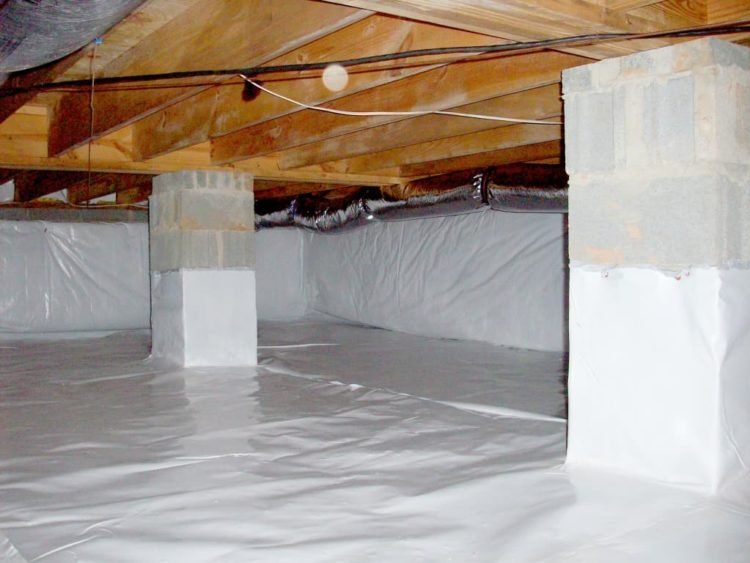Introduction to Crawlspace Waterproofing
Crawlspace waterproofing is essential for a safe, dry house. Sometimes crawlspaces are often forgotten, especially over time. The small amount of moisture that can seep into it may continue to accumulate until it develops molds and mildews. This can further wreak havoc on the structural integrity of your home. By getting your crawlspace waterproofed, you protect the foundation of your home, improve indoor air quality, and even increase your property value.
Why Crawlspace Waterproofing Matters
Moisure in crawlspaces is one of the biggest issues that can cause a problem of many sorts. Without crawlspace waterproofing are an invitation for molds to breed, pests to infest, and wood to rot, all of which weaken your home’s structural integrity. Waterproofing does not just prevent them but also curtails the energy spend as it adds to insulation, lowering the heating as well as cooling cost.
Common Causes of Crawlspace Moisture
Several factors lead to moisture problems in crawlspaces. Major contributors include poor drainage, inadequate ventilation, and excessively high humidity levels. The landscaping around your house, poor grading, and clogged gutters can also channel water toward your foundation. To make the best selection of the most effective type of waterproofing, you will be guided by the root causes.
Benefits of Waterproofing Your Crawlspace
Waterproofing brings so many benefits; that is higher air quality and reduced allergens in your house. Waterproofing can regulate the temperature of your house by maintaining constant temperatures, thus saving heating or cooling costs. Waterproofing protects your house from pests and mold, which will help you save expensive reworks later and keep your family safe from harmful effects.
Key Steps in Crawlspace Waterproofing
Generally, waterproofing a crawlspace requires inspection, cleaning, sealing, and applying a vapor barrier. First, inspect for the presence of cracks or leaks and debris and eliminate standing water. Sealing the cracks, as well as the application of vapor barrier, will be able to keep moisture out once cleaned; thus, it will make it a dry environment.
Crawlspace Encapsulation: A Comprehensive Solution
Encapsulation is one of the more popular waterproofing methods. This involves sealing up the crawlspace completely. It includes a floor and wall covering with a heavy-duty plastic vapor barrier that seals out moisture. Some encapsulation systems include a dehumidifier to control humidity. It would seal in moisture that has saturated the crawlspace over time and keep it away from settling into your home for long.
Vapor Barriers: An Essential Component
Vapor barriers are an integral part of crawlspace waterproofing and stop moisture from penetrating the foundation of your home. These plastic sheets block the intrusion of water and humid air from outside into your house through its floor. This minimizes mold development and structural damage since it blocks out groundwater and external humidity. The best part is that the quality of materials and proper installation of these materials form an efficient vapor barrier system.
French Drains and Sump Pumps for Enhanced Protection
In case of crawlspace with recurrent moisture problems, French drain or sump pump proves to be an added protection measure. It takes away water from the foundation through a French drain, and water lying in the crawlspace is evacuated by a sump pump. Both prove helpful for houses in areas prone to floods or rain.
DIY vs. Professional Waterproofing
While some home owners can try DIYs on their own, professional service providers provide expert services and equipment meant for specific jobs. Professionals also evaluate conditions specific to your crawlspace and offer a solution that might be encapsulation or drainage system. Professionals save time and possibly will not make mistakes that will worsen your moisture problems.
Crawlspace Waterproofing Maintenance Tips
Maintenance of these remediation measures is also important; once you have waterproofed your house, you should stay vigilant for any moisture signs in your structure. One should seal all leakages and fill cracks with cold seal or even better, seal them with a marine epoxy. Measures on cleaning the gutters should also be taken to ensure that water doesn’t accumulate around the foundations. Monitor humidity levels and use a dehumidifier also.
Conclusion: Protect Your Home with Crawlspace Waterproofing
Waterproofing your crawlspace is a precautionary measure that will, therefore, serve to protect the foundation of your home, improve quality indoor air, and avert costly repairs. Whether it is encapsulation, putting up vapor barriers, or installing a new drainage system, peace of mind and long-term savings combined protect your home and health.



